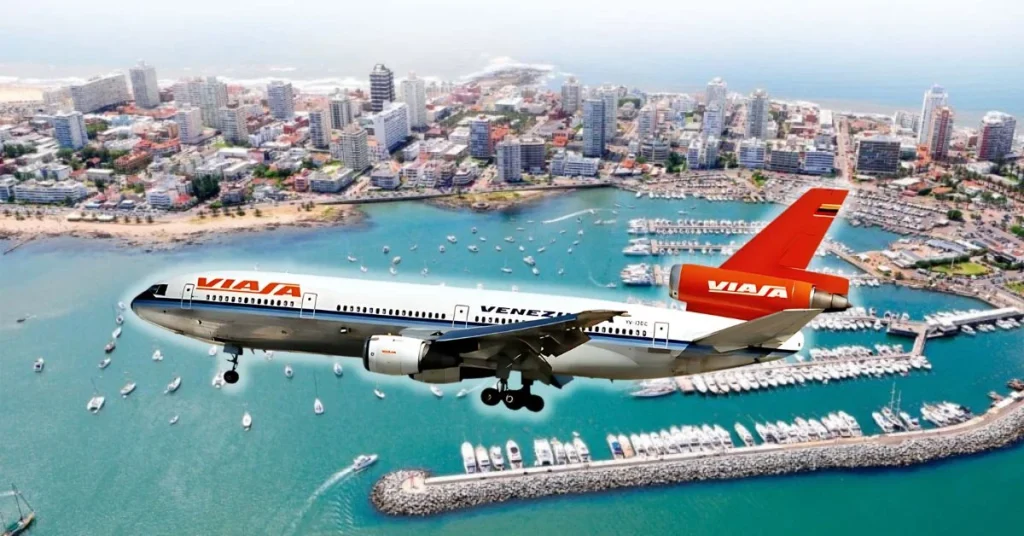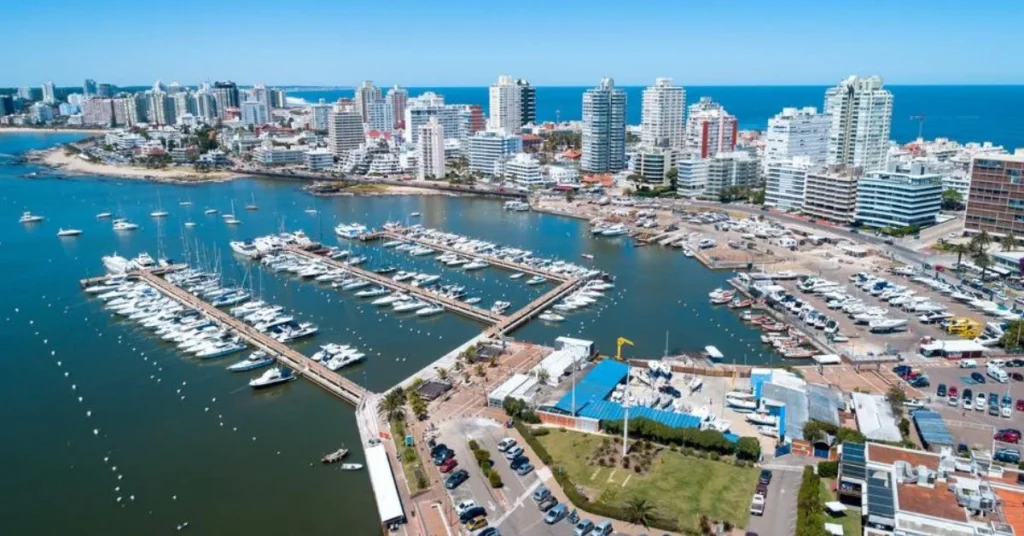Travel has always been about more than just reaching a destination—it’s about connecting cultures, fostering understanding, and unlocking new experiences. One airline that played a critical role in connecting South America with the world was Viasa, Venezuela’s former international airline. Viasa Volava a Uruguay represented more than a flight; it symbolized a bridge between two vibrant nations, Venezuela and Uruguay. Through its role in fostering tourism, cultural exchange, and economic growth, Viasa left a lasting impact on Uruguay’s travel landscape.
In this article, we’ll explore the rich history of Viasa, its connection to Uruguay, and how it helped open up this beautiful country to the world. We’ll also dive into Uruguay’s cultural heritage, natural beauty, and must-see destinations for travelers seeking adventure.
The History of Viasa: Connecting Nations Through the Skies
Viasa (Venezolana Internacional de Aviación, Sociedad Anónima) was founded in 1960 with a clear vision: to establish Venezuela as a hub for air travel between South America, Europe, and North America. During its peak, Viasa quickly grew into one of the leading airlines in the region, known for its high-quality service, broad flight network, and commitment to connecting diverse cultures.

Throughout the 1960s and 70s, Viasa expanded its operations into various South American countries, including Uruguay, and became instrumental in connecting Venezuela to Montevideo, the capital of Uruguay. For many, Viasa represented a new era of regional connectivity and cultural exchange.
Viasa’s Connection with Uruguay: More Than Just a Flight
Viasa’s flights to Montevideo were among its most important routes. Not only did they offer Caracas-Montevideo connections for business travelers and tourists, but they also symbolized a deeper cultural exchange. Through these routes, Venezuela and Uruguay formed stronger ties, sharing ideas, customs, and economic opportunities.
For passengers, flying with Viasa wasn’t just about reaching a destination—it was an experience. Exceptional service, modern aircraft, and a focus on comfort made each journey memorable. The Caracas to Montevideo route in particular was highly valued for opening doors to Uruguay’s hidden gems, such as its serene beaches, historical cities, and thriving cultural scene.
Cultural Impact: Viasa as a Bridge Between Venezuela and Uruguay
Viasa’s operations between Venezuela and Uruguay extended far beyond transportation; the airline acted as a powerful cultural bridge, connecting two nations rich in heritage. With each flight, Viasa carried not only passengers but also ideas, traditions, and a shared sense of curiosity.
The cultural exchange fostered by these routes led to a deeper understanding of each country’s customs, music, food, and art. Uruguayans had the chance to explore Venezuelan culture, while Venezuelans discovered the beauty of Uruguayan life, from its cobblestone streets to its vibrant festivals.
Exploring Uruguay: A Country Rich in Culture and Natural Beauty
Though small, Uruguay packs a punch when it comes to diversity. This South American gem is known for its warm hospitality, stunning landscapes, and rich history. Travelers flock to Uruguay to experience its blend of urban sophistication and untouched nature.
Whether you’re visiting the modern yet historical capital of Montevideo, relaxing on the pristine beaches of Punta del Este, or stepping back in time in Colonia del Sacramento, Uruguay offers something for every type of traveler.
Montevideo: The Cultural and Economic Heart of Uruguay
Montevideo, Uruguay’s vibrant capital, is where tradition meets modernity. Known for its lively atmosphere, Montevideo is home to colonial architecture, bustling markets, and a rich cultural calendar filled with festivals and concerts. Iconic landmarks like the Palacio Salvo and the Teatro Solís reflect the city’s deep-rooted history, while modern attractions provide a cosmopolitan touch.
The city’s neighborhoods, each with its unique charm, offer a glimpse into local life. Whether you’re strolling along the Rambla, a picturesque waterfront promenade, or exploring the famous Mercado del Puerto, a hub of Uruguayan cuisine and local crafts, Montevideo is a destination filled with experiences that cater to both history buffs and culture lovers alike.
Punta del Este: The Jewel of the South Atlantic
Montevideo is Uruguay’s cultural hub, and Punta del Este is its luxurious escape. Known as the “St. Tropez of South America,” Punta del Este is famous for its upscale resorts, celebrity visitors, and world-class beaches. But beyond its glamour, the town offers visitors a chance to experience pristine natural beauty.
Playa Brava and Playa Mansa are two of the most famous beaches in Punta del Este. Whether you’re seeking a serene spot to soak in the sun or more energetic water sports, Punta del Este offers the best of both worlds. And for those interested in art and culture, the area’s galleries, museums, and cultural festivals provide plenty of enrichment.
Colonia del Sacramento: A Journey Through Time
For those craving a taste of history, a visit to Colonia del Sacramento is a must. This UNESCO World Heritage Site is famous for its well-preserved colonial architecture and cobblestone streets, offering a glimpse into Uruguay’s past. The town’s Spanish and Portuguese influences are evident in its buildings, creating a charming and peaceful atmosphere that transports visitors back to a different era.
One of Colonia’s highlights is its historic quarter, where travelers can wander through narrow streets, explore ancient churches, and take in stunning views of the Rio de la Plata from the town’s lighthouse.
The Natural Beauty of Uruguay: A Diverse Landscape
Beyond its cities and historical landmarks, Uruguay boasts diverse natural landscapes. From rolling hills and vast wetlands to untouched beaches, the country is a paradise for nature lovers. Uruguay’s commitment to sustainable tourism ensures that these beautiful landscapes are preserved for future generations.
Nature enthusiasts can explore the Bañados del Este, a region of wetlands known for its birdlife and biodiversity, or enjoy the tranquil beauty of Uruguay’s countryside, perfect for hikes and eco-tourism experiences.
Uruguayan Cuisine: A Blend of Tradition and Flavor
One of the highlights of any trip to Uruguay is the chance to indulge in its culinary delights. Uruguayan cuisine is deeply rooted in its cultural heritage, with influences from Spanish, Italian, and indigenous traditions. The asado, or barbecue, is a national pastime, where family and friends gather to enjoy slow-cooked meats over an open flame.
Another must-try is the chivito, a hearty sandwich filled with steak, cheese, eggs, and a range of other toppings. And, of course, no trip to Uruguay would be complete without sharing a cup of mate, the herbal drink beloved by locals.
The Warmth of Uruguayan Hospitality
Uruguayans are known for their friendly and welcoming nature. Whether you’re a tourist wandering through Montevideo or a guest at a family’s countryside asado, you’ll experience the warmth and hospitality that make visitors feel like part of the community.
Understanding local customs and etiquette is key to making the most of your visit. Uruguayans are proud of their cultural heritage and enjoy sharing their traditions, whether through a shared mate session or a conversation about the country’s history.
Aviation’s Role in Tourism Growth: Building Bridges to the Future
Airlines like Viasa played a crucial role in boosting tourism and economic growth in Uruguay by making it easier for international travelers to discover the country’s wonders. Today, Uruguay continues to benefit from its strong aviation industry, with new routes and services being developed to increase regional connectivity.
The importance of sustainable tourism cannot be overstated. As more visitors come to explore Uruguay’s pristine beaches and rich culture, the aviation and tourism industries are working to minimize environmental impact and ensure that these treasures remain protected.
Viasa’s Legacy in South American Aviation
Though Viasa is no longer in operation, its legacy in South American aviation lives on. The airline was a pioneer in the region, setting a standard for service and connectivity that continues to inspire modern airlines. Viasa’s role in connecting South America with the world paved the way for future generations of travelers, and its influence can still be felt in the region’s aviation industry today.
The Future of Air Travel and Tourism in Uruguay
As Uruguay continues to grow as a tourist destination, the future of air travel is looking brighter. With emerging routes and a focus on sustainable tourism, the country is well-positioned to welcome more travelers while preserving its natural and cultural treasures. Uruguay will remain a hidden gem in South America, but one that is increasingly being discovered by those seeking authentic and meaningful travel experiences.
Conclusion
The story of Viasa Volava a Uruguay is a testament to the power of air travel to connect cultures, foster economic growth, and create lasting memories. From the airline’s flights to Montevideo to the enduring beauty of Uruguay’s landscapes, Viasa’s legacy continues to resonate in the hearts of those who experienced its flights and the country it helped open up to the world.
Whether you’re visiting for the cosmopolitan charm of Montevideo, the beachside allure of Punta del Este, or the historical significance of Colonia del Sacramento, Uruguay offers an unforgettable travel experience that blends rich history, vibrant culture, and breathtaking natural beauty.
FAQs:
What was Viasa’s role in South American aviation?
Viasa was a pioneering airline that connected Venezuela to South America and beyond, helping boost regional air travel and cultural exchange.
What are the top tourist destinations in Uruguay?
The most popular spots include Montevideo, Punta del Este, and Colonia del Sacramento, offering a mix of history, culture, and nature.
How did Viasa influence cultural exchange between countries?
Viasa facilitated cultural exchange by creating air routes that allowed people from different nations to experience new traditions, foods, and ideas.
What are the must-try dishes in Uruguay?
Don’t miss out on the asado, chivito, and mate—all deeply rooted in Uruguayan culture.
How does Uruguay promote sustainable tourism?
Uruguay emphasizes environmental protection and sustainability in tourism through conservation initiatives and responsible travel practices.

